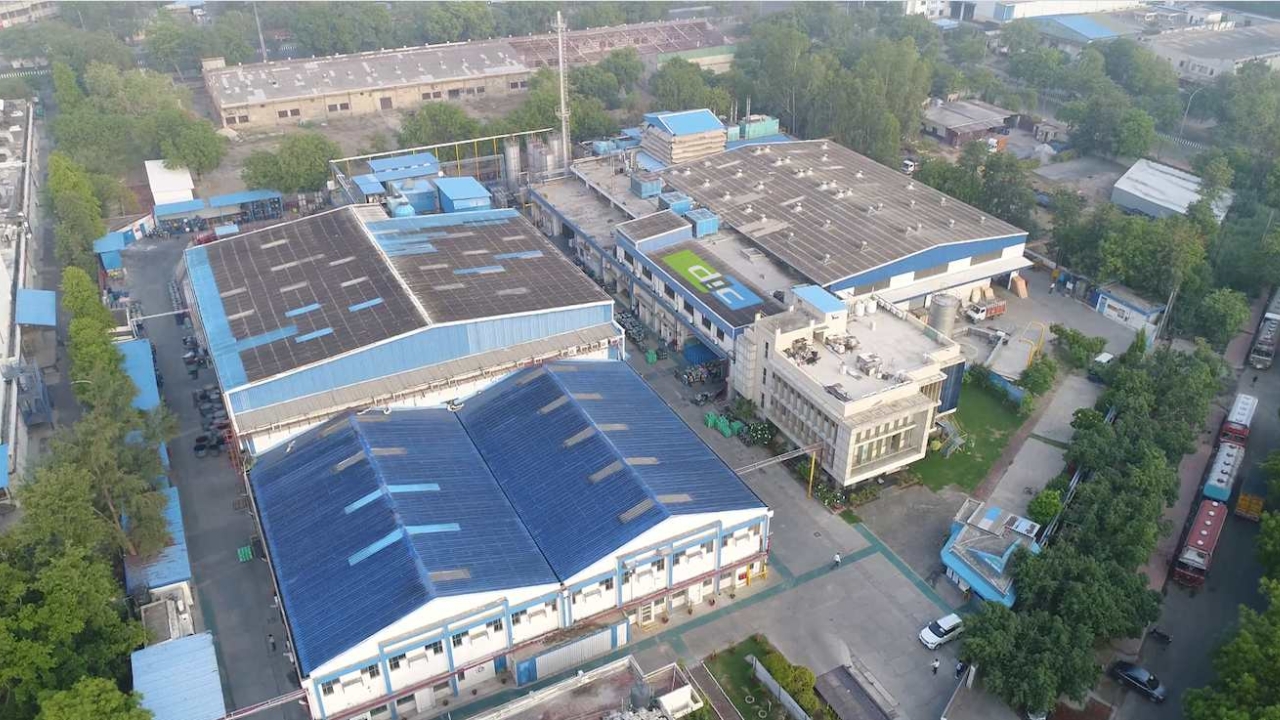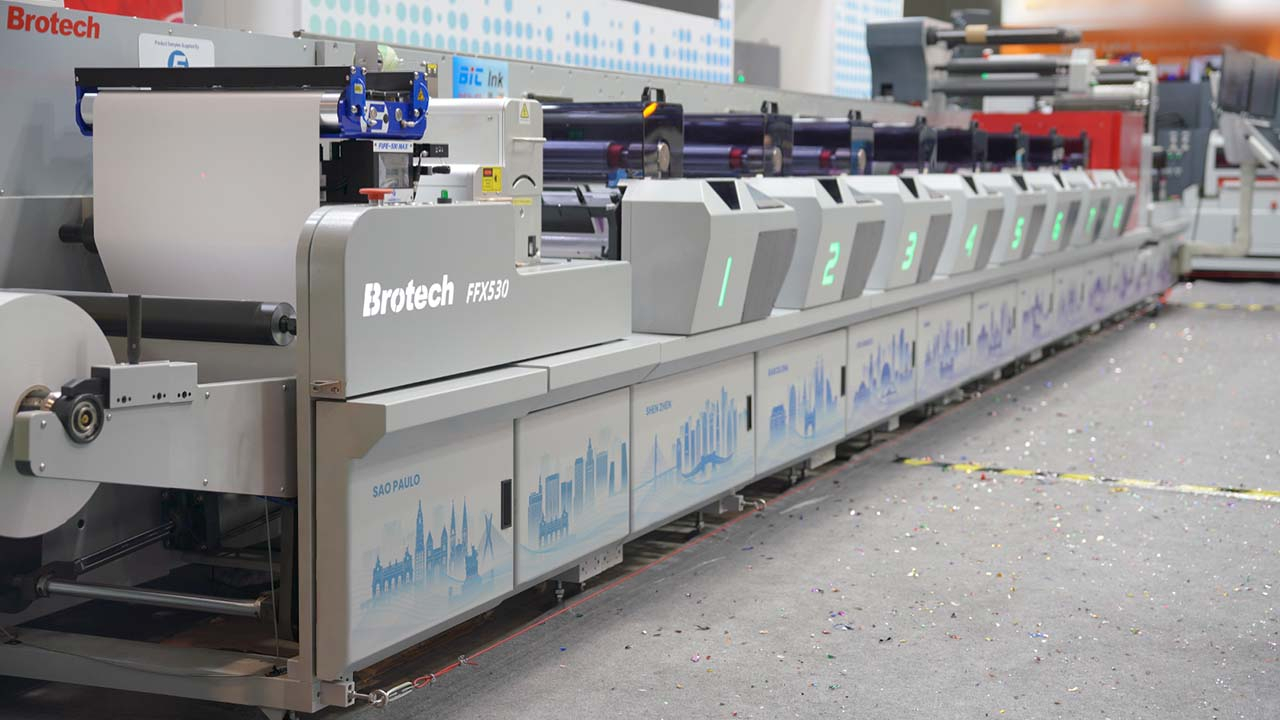Opportunity out of adversity

Since DIC India caters to both the packaging and publishing industries, one of the major challenges it faced was reinventing the raw material mix to continue seamless service to the market. Manish Bhatia, CEO and managing director at DIC India, says: ‘China started going through the Covid crisis in January so there was a concern about a disruption in the supply chain. We spent the first quarter planning our raw material inventory so that our service wouldn’t falter. However, the first lockdown happened in a manner that the consumption simply stopped in most places. Our whole raw material mix underwent a serious change with the publication business going blank for a few months, and the packaging business picking up pace.’
Many companies faced a similar challenge and learned to adapt their manufacturing capabilities and raw material planning. ‘The demand is changing again now as the country is opening, but in a lot of segments demand patterns are very inconsistent. Some product segments have seen a V-like recovery whereas others are still witnessing a muted recovery. Consumption patterns are beyond our control but we are keeping a close eye and are working closely with our Asia Pacific office to create raw material inventory in India and abroad that allow for swings in demand,’ says Bhatia.
Unlike many factories across the country, DIC India was able to restart manufacturing as early as April 2. The first lockdown in India was announced from March 24. Bhatia says: ‘We could start operations principally because we were supplying to a lot of converters who cater to leading brands in the FMCG segment. The Indian government ensured essential commodities such as milk, cereals and other condiments were not stopped during the lockdown, which enabled us to start operations.’
Another advantage is DIC India’s geographic spread of factories: in Noida, Bengaluru, Ahmedabad and Kolkata. ‘Most of our product categories have two sources of manufacturing,’ explains Bhatia. ‘In February and March, we prepared ourselves and ensured the availability of raw materials and finished goods at two different locations. So, when the authorities in Noida were strict on manufacturing operations, the Kolkata plant ensured deliveries were completed. When the authorities announced a containment zone close to our factory in Kolkata, we asked our workers to stay at home and another factory took over. So, we did not default our supplies. However, there were challenges because there were instances of trucks standing still on the roads. The supply chain disruption caused severe cost pressures. We at DIC put our customers first, and despite a significant increase in costs, we ensured the deliveries were fulfilled without any delays.’
Konnect-ed with customers
DIC India further connected with its customers using a digital platform, DIC Konnect. Using this platform, the company advised converters on how best to restart operations after the lockdown, with minimal risk to employees. ‘We put together a plan to unlock factories, and connected with around 250 converters during more than 70 sessions to open up factories with minimum wastages and risks. Some of these interactions gave us good insights into their requirements,’ says Bhatia.
Thereafter, the company used the same platform to create awareness about the ban of toluene inks in India. Brands and converters needed to understand what this law entailed.
Further, in October, DIC launched a mobile application, DIC Ink Master, to address converters’ day-to-day operational queries, without any physical engagement. The app lists possible operational problems and solutions related to lamination adhesive, news inks, flexographic, gravure and offset printing. It also offers a dedicated ‘Raising a query’ section that allows customers to request guidance on new problems they face. The app is monitored 24 hours a day, 365 days a year, by an assigned team at DIC India.
‘The app also enables them to take a picture using their device and send it to our team for any assistance. We have been responsibly partnering with the industry and received a very positive response from both converters and brand owners,’ says Bhatia.
Trends
Interactions with all stakeholders provided an insight in the massive shift in consumption patterns. The proportion of small to big packs have undergone a change. With the hotel, restaurant and catering (HoReCa) industry affected by the pandemic, the sale of big bulk packs have declined significantly. Citing an example, Bhatia explains: ‘The 50kg pack segment has shrunk significantly but the 5kg and 10kg segments have shot up. However, for segments such as cheese, butter and some cereals, there was some bulk buying. But a lot of cooking shifted to people’s homes. As a result, the retail packs have flourished. The consumer involvement is much higher, and brand owners think it is likely to continue. This has led to a move towards more sustainable packaging with water-based products. Brands and converters are getting ready to accelerate the shift towards sustainability going forward.’
The company also sees growth of small SKUs that entails different requirements from ink manufacturers compared to bulk production.
Bhatia adds: ‘Local brands that service tier-2 and -3 cities are performing better than in pre-pandemic days. Therefore, non-metro demand is exceeding the metro demand after the initial stocking up due to lockdown normalized.’
Products such as whole wheat flour in India are not packaged on a large scale because people in tier-2 and -3 cities traditionally prefer freshly milled flour from local shops. ‘However, we see a trend in increasing number of products being packaged now due to safety and hygiene issues. Increased e-commerce has also enabled tracking of products,’ says Bhatia.
The Bureau of Indian Standards (BIS) banned the usage of toluene inks in food packaging, which will drive a shift in the usage of inks. Many converters who were producing baseline vinyl-based packaging for flexible packaging are now evaluating between non-toulene and polyurethane-based inks.
‘The difference in cost is 5 to 10 percent. So, Indian brands that are exploring opportunity for export to Western economies are now thinking of shifting labels and packaging to safer inks. Therefore, there is an increased interaction with brands, especially large food companies, about shifting to greener and more sustainable options such as water-based inks. While these developments could take a couple of years to materialize, some converters are carrying out trials and are at an advanced stage of making a shift in their portfolio,’ says Bhatia.
While there are positive developments, India’s GDP is projected to contract by 10.8 percent in 2021-22. Bhatia agrees: ‘Most companies have delivered healthier results in the third quarter compared to the second quarter. There was an initial surge in our segments in July and August which seems to have flattened a bit. Results in the fourth quarter will depend on how the virus is managed and the introduction of vaccines. Companies will hit a rock bottom baseline in the next fiscal.’
Expansion
With all its challenges, the lockdown also gave many companies the opportunity to expand operations. DIC India took the opportunity to increase its activities for CI flexo by 50 percent in recent months. ‘We have augmented our non-toulene, non-ketone inks factory set-up within the Noida factory that is completely isolated from other operations. We also implemented the Kaizen concept on the production floor to de-bottleneck the adhesive plant in Bengaluru,’ says Bhatia. Bengaluru is the company’s center for export of adhesive to Southeast Asia. Further, DIC India bought a sizable plot of land in Gujarat a couple of years ago and is actively evaluating further expansion.
Stay up to date
Subscribe to the free Label News newsletter and receive the latest content every week. We'll never share your email address.

